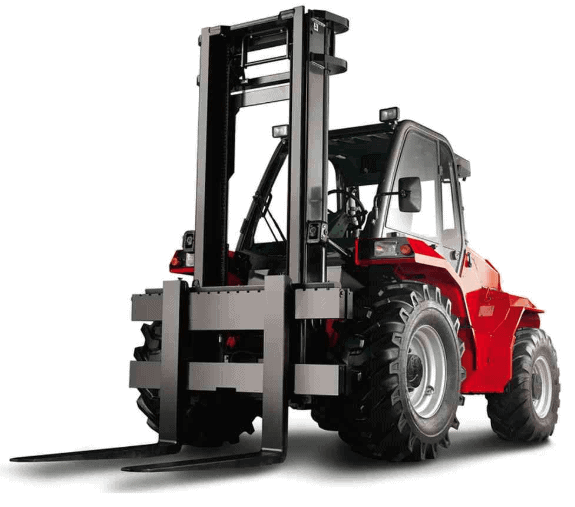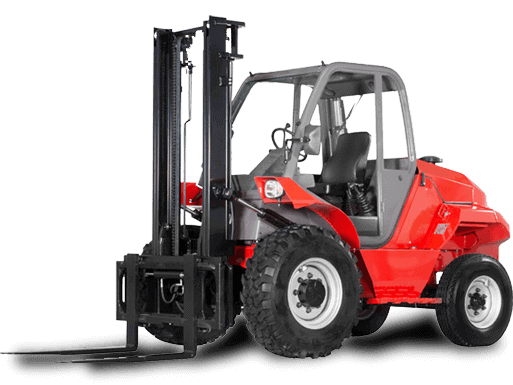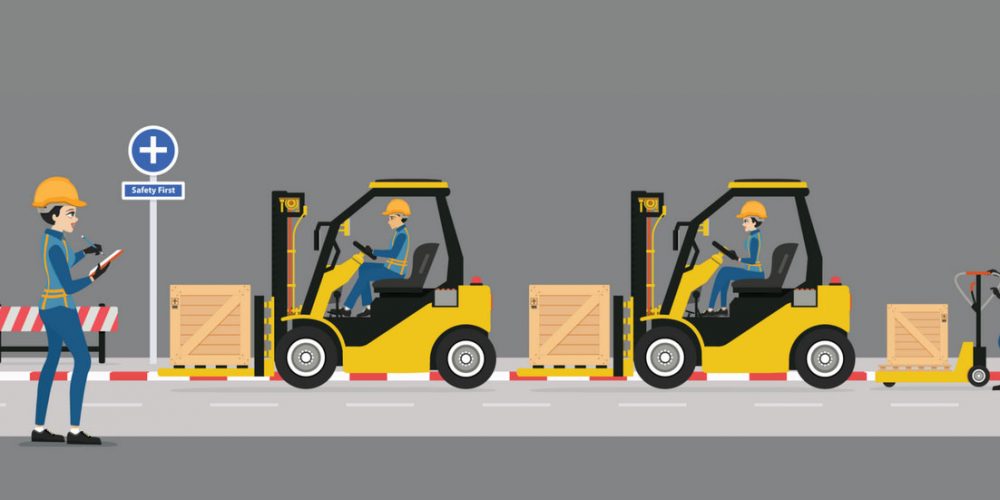Forklifts are an integral part of many industries. Whether used in warehouses, manufacturing, or any other applications, they perform core functions and are the lifeblood that keep businesses ticking along.
Because of their frequent level of use, it’s of paramount importance that appropriate safety checklists are established and adhered to on a regular basis. If best practice is not followed, not only will this compromise employee safety, but can also lead to significant asset damage and further unfavourable ramifications for a business.
Here at Forkserve we hold safety with the utmost importance. We’re committed to ensuring that not only is our equipment maintained to the best possible standards, but to also helping our customers adhere to best practice Forklift operation.
In this blog, we’ll go through just how important checklists are for a business, and some examples of the common checks to perform at the start of day, shift handover and at the end of the day. By following these safety protocols you’ll be creating an overall safer working environment and protecting your business from any avoidable risks going forward.
Importance of Forklift Checklists
Safety regulators, forklift manufacturers, and many established companies encourage that forklifts be inspected through safety checklists before operating. Checklists are considered industry best practice and an effective way to detect any potential equipment failure that could otherwise cause injuries and property damage.
By using checklists, employees are able to properly inspect and assess equipment before use, helping to ensure it’s in an appropriate condition for operation and preventing any avoidable accidents.
The use of checklists should become a cornerstone of your business’s safety culture and be ingrained in employee’s daily safety procedures.
Benefits of Mitigating Risk
If not maintained properly, a forklift can become a dangerous piece of equipment in a workplace not only for workers, but for visitors or anyone else in the vicinity. By establishing and following appropriate safety and compliance protocols, an organisation will not only create a safe work environment for its staff, but will also mitigate any potential risks to its operational efficiency.
There is also a cost-saving component related to the proper adherence to safety protocols.
By being proactive and discovering problems, or any signs of irregularities, before they become endemic, an organisation can limit and plan any potential downtime. This allows operational efficiency to be maintained and deliverables to be continually met.
Additionally if an issue is identified earlier, it will be easier and less expensive to repair as opposed to when it has gone past a point where significant effort is required for rectification.
It is also important to be aware of the business requirement to establish a safe working environment. In a worst case scenario, if it has been determined that there has been a failure to follow appropriate forklift safety procedures, this could result in hefty fines being levied.
By following appropriate safety protocols not only will a safe working environment be created, but it will also enable a business to maintain its operational efficiency, limit any repair costs, and protect its overall reputation.
Start of the Day
The importance of a forklift pre-start checklist is undeniable. It’s generally a short process helping to prevent any serious injury, and ensuring the safety of not only the operator but of everyone else around.
It’s recommended that a pre-start safety checklist should be conducted at the beginning of each shift and every time an operator uses a different forklift. As a starting point, manufacturers often provide sample checklists that can be updated and customized as necessary. This material provides good initial guidance of the type of factors to look out for.
According to Safe Work Australia pre-start safety checks or procedures should include the following checks:
- Lift and tilt systems including the correct operation of attachments such as clamps, hydraulics lines (for oil leaks), chains, cables and limits
- Steering, brakes (including park brakes), controls and lights
- Each tyre for wear, damage, and inflation (pneumatic types)
- Guarding is in place and functional, for example, around the battery compartment or fuel lines
- All warning devices are operational
- Fork arms and attachments (for deformation, damage or wear)
- Liquid levels, for example, hydraulic oil, brake fluid and water
- Gas cylinder, where relevant, and its securing system
- Check the condition and adjustment of the seat and seat belts to ensure they work reliably
- Load capacity data plate is fitted, legible and correct
- Mast: check for signs of wear, damage, cracks or repairs.
In addition further checks should be carried dependent on the forklift’s propulsion system.
For Electric Forklifts:
- There is no fraying or exposed wires in cables or connectors
- Battery restraints are functional
- Electrolyte levels are proper
- The hood latch is operational
For Internal Combustion Forklifts:
- Engine oil and engine coolant levels are proper
- Air filters are clean and in place
- The radiator is free of cracks or other defects
- The hood latch is operational
If any defects or areas of concern are identified, full details should be recorded on the checklist, and any applicable organisational safety policies should be adhered to. This will generally involve raising any issues to the next level of management, and the tagging and removal of any faulty equipment.
Shift Handover
In the case of a shift handover an operator should never assume that the forklift has been left in a safe condition by the previous operator. As such it’s recommended the same checks are conducted as per the start of the day.
Particular emphasis should be given to check whether any known issues are continuing to register (see whether anything has been identified in the start of day checklist), and whether any designated downtime for the equipment has been adhered to, before its next scheduled period of operation (i.e. is any downtime needed to fully recharge an electric battery).
End of the Day
The end of the day safety checklist relates to the reporting of any identified safety issues and ensuring the forklift has been securely stored, ready to be operational for the next day.
End of day safety checks or procedures should include the following checks:
- Park up of forklift in designated storage bay
- Storage of keys and other documentation in allocated space
- Refuel / recharge of forklift power source
- For Electric forklifts further checks need to be performed on the charger and connection (refer to electronic forklift items in start of the day checklist)
- Reporting of any operational safety issues experienced
In the event that a problem is discovered, it must be reported on and the forklift must be removed from service immediately.
The importance of establishing and adhering to proper forklift safety checklists and guidelines cannot be underestimated. Adherence to these standards will not only minimise the risk of injury for all parties involved, but will also maintain a business’s operational efficiency and mitigate any associated adverse costs.
It’s recommended that you establish detailed start of the day, shift handover, and end of day checklists, so operators know exactly what their safety requirements are. Guidance for these checklist lists can be obtained from manufacturer’s recommended procedures, and Fair Work Australia recommendations. By setting the appropriate safety procedures and processes in place, you’ll create an environment where safety forms an integral part of everyday workplace culture creating an overall safer work environment.
If you require any further guidance on Forklift safety or related issues don’t hesitate to contact us here at Forkserve. We have extensive experience with a variety of brands and their appropriate operation. We can advise you how to establish the appropriate safety mechanisms in your workplace and establish a safety first culture.
For any of your forklift needs, why not contact us today.





